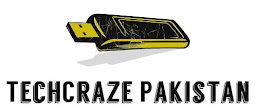AI Image Generators: Unveiling the Representation Problem in DALL-E and Stable Diffusion
In recent years, the field of artificial intelligence (AI) has witnessed remarkable advancements, especially in the realm of image generation. With the introduction of groundbreaking models like DALL-E and Stable Diffusion, machines are now capable of creating astonishingly realistic and creative images. However, behind the façade of these impressive achievements lies a deep-rooted challenge that AI researchers are grappling with - the representation problem.
DALL-E, a neural network model developed by OpenAI, gained significant attention when it showcased its ability to generate images from textual descriptions. By learning from an extensive dataset of text-image pairs, DALL-E can understand and translate textual prompts into visual outputs. This breakthrough innovation opened up endless possibilities, enabling users to simply describe an image and witness it materialize before their eyes. Nevertheless, despite its remarkable capabilities, DALL-E faces a representation problem.
The representation problem refers to the challenge of generating images that exhibit a coherent and consistent understanding of the given textual prompt. While DALL-E excels at generating novel and visually appealing images, it often fails to capture the specific nuances and details described in the text. For instance, if asked to generate an image of a "red apple with a bite taken out," DALL-E might produce an image of a red apple, but without the distinctive bite mark. This limitation hampers the model's ability to faithfully represent the intended image and hinders its practical applications.
Similarly, Stable Diffusion, another state-of-the-art AI image generator, encounters the representation problem. Stable Diffusion utilizes a diffusion-based generative model to create high-quality images. By iteratively transforming a random noise vector, Stable Diffusion generates images with remarkable clarity, detail, and realism. However, it too struggles with faithfully representing specific details and characteristics. This discrepancy between the intended image and the generated output poses a significant challenge for AI researchers aiming to bridge the representation gap.
Overcoming the representation problem in AI image generation is a complex task that requires a multidisciplinary approach. One possible solution lies in improving the training strategies and datasets used to train these models. By incorporating more diverse and comprehensive datasets, AI models can learn to capture a broader range of visual concepts and details, thus enhancing their ability to faithfully represent the intended images.
Additionally, refining the generative models themselves holds promise in addressing the representation problem. Researchers can explore novel architectures and algorithms that prioritize the faithful representation of specific details and attributes in the generated images. By fine-tuning the models to be more attentive to the textual prompts and the intricacies of the desired images, we can expect significant improvements in the accuracy and fidelity of AI-generated images.
The representation problem in AI image generators like DALL-E and Stable Diffusion serves as a reminder that while AI has made remarkable strides in image generation, there are still inherent limitations that need to be addressed. By recognizing and actively working towards overcoming these challenges, researchers can pave the way for more reliable and accurate AI image generation systems.
Conclusion
In conclusion, DALL-E and Stable Diffusion are groundbreaking AI image generators that have captivated our imaginations with their ability to create stunning images. However, the representation problem they face highlights the need for further research and development in the field. By focusing on improving training strategies, refining generative models, and expanding datasets, we can strive to bridge the gap between textual prompts and generated images, unlocking even greater potential for AI image generation in the future.





.jpg)



0 Comments